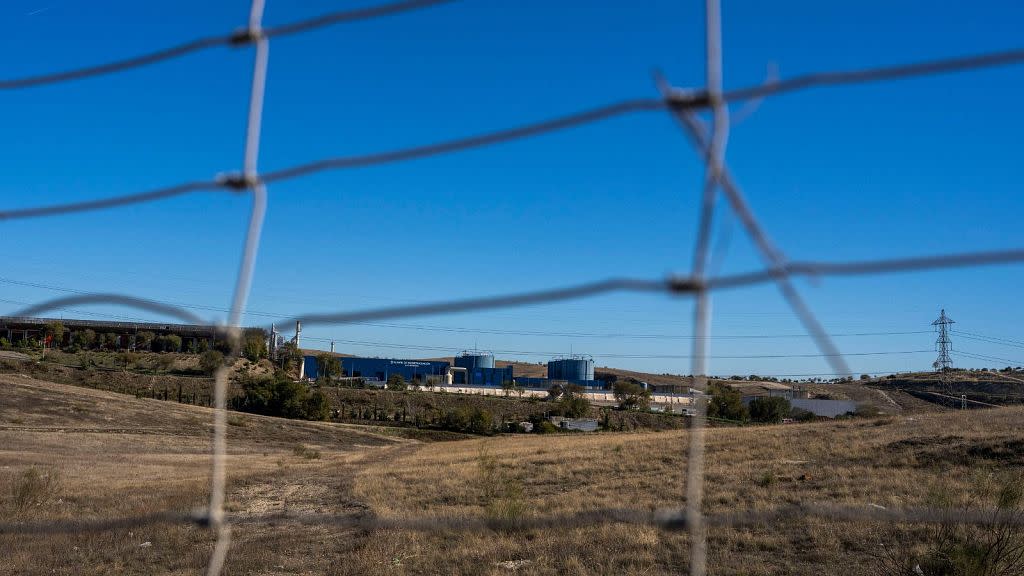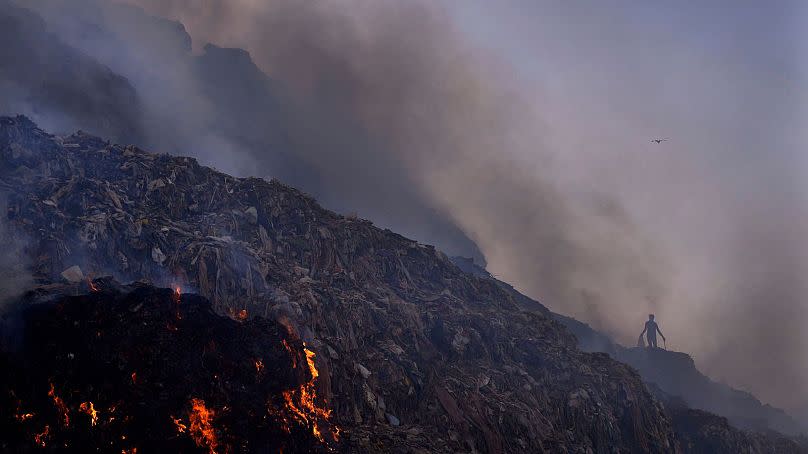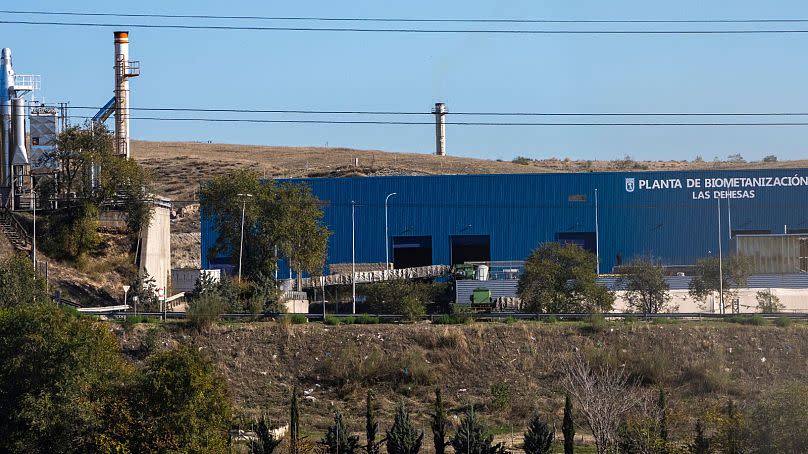Methane could make or break the world’s global warming limit. Where in Europe is it leaking most?

Madrid has suffered at least 17 major methane leaks in the last three years, according to new satellite data.
During one super-emitter event last year, 25 tonnes an hour of the planet-warming gas was released by landfill sites on the outskirts of the Spanish city. That’s equivalent to the pollution pumped out by 3.9 million petrol cars running simultaneously.
Globally, more than 1,200 of these events occurred between January 2019 and June 2023, new satellite image analysis released in a Guardian investigation shows.
People in Pakistan, India and Bangladesh bear the brunt of methane pollution from landfill waste dumps. But Spain comes a surprising sixth on the list of nations with the largest leaks, after Argentina and Uzbekistan.
This ‘tipping point’ would be catastrophic for Europe but scientists aren't sure when we'll reach it
‘A new climate reality’: Spain’s drought-stricken villages have been in crisis mode for months
What is methane and why is it so dangerous?

Tackling methane is essential to avoiding the worst climate scenarios. The potent greenhouse gas traps 86 times more heat in the atmosphere than carbon dioxide over 20 years. It is responsible for around a third of the global heating we are experiencing today.
World leaders are well aware of the threat; at the UN climate summit in 2021 more than 100 countries pledged to cut methane emissions by 30 per cent by 2030.
Decomposing waste drives around 20 per cent of human-caused methane emissions; with the greater shares coming from agriculture (approximately 40 per cent) and fossil fuels (35 per cent).
There’s an unnatural cycle in motion too, with global heating causing wetlands to shed more of their stored carbon in the form of methane.
The global 2030 target is impossible without tackling emissions from the waste industry, president of the International Solid Waste Association (ISWA) Carlos Silva Filho, told the Guardian.
“Cutting methane is the only solution to meet the global 1.5C temperature target,” he said. “If we really focus on reducing methane emissions from the waste sector, it is a gamechanger.”
Why are landfill sites emitting methane?
Roughly 40 per cent of the world’s waste is sent to landfill sites, ISWA says. Methane is emitted from these dumps when organic waste like food scraps, paper and wood is decomposed by microbes in the absence of oxygen.
It’s unusual for the Spanish landfill spots to be emitting so much methane, as most developed countries have properly managed waste systems and regulations in place to plug methane leaks.
Typically, organic materials are either diverted from landfills into biodigesters - equipment that biologically breaks the waste down in a closed system. Or the landfills are covered to capture the gas. Layering the sites with soil, for example, is a cheap albeit temporary solution in places that lack proper facilities.
Capturing methane gas presents an opportunity to turn a waste product into a commodity, as it can be sold as fuel (and it turns to CO2 when burnt, a less potent greenhouse gas).
Why are Madrid landfills emitting so much methane?
New satellite image analysis from environmental intelligence company Kayrros reveals 17 leaks in Madrid since 2021, with four major ones occurring in the first half of 2023.
Kayrros’s satellite orbits the planet 14 times a day and can give the location of a leak to within six miles. So while it can’t map leaks precisely, the tech points to the emissions coming from landfill sites to the south of the city centre.

This isn’t the first time that Madrid’s methane-emitting dumps have been in the spotlight. Satellite data from the European Space Agency (ESA) also picked up emission events in 2021, which were traced to two nearby landfill sites.
One of these is Las Dehesas site, a landfill site with a large biogas extraction plant designed to capture the methane fumes.
Madrid says it is cleaning up its methane act
In response to the Guardian investigation, Madrid’s city council said that large leaks at the biogas plant would have been detected and that the plant met all environmental regulations. It also responded that other landfill sites not under its control in the wider Madrid region could be to blame, as the satellite estimates are not as reliable as ground measurements.
But improvements are afoot at Las Dehesas site. While the authorities maintained that the 20 per cent of methane estimated to escape from the spot is normal for a controlled landfill with biogas extraction, they are also looking at tech solutions.
“[A] real-time monitoring system for the fugitive emissions at the Las Dehesas controlled landfill” and robotic inspections to gather data are planned by the end of 2024.
This should go some way to clearing the clouds of methane that the ESA has recorded drifting towards nearby residences in recent years.
“We have been denouncing the disastrous waste management of the Community of Madrid and the entire state for decades,” Greenpeace campaigner Julio Barea told El Independiente newspaper in 2021. “100% of the organic matter of the almost seven million people who live in the Community of Madrid is being taken to landfills.”
Madrid’s nonhuman residents are also impacted by these trash mountains. Migrating white storks are being drawn to the landfills for food, and the plastic they eat is proving fatal.

